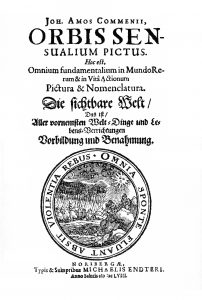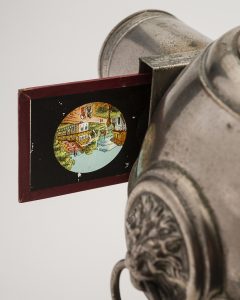Many people around the world are utilizing technology to learn languages. Whether it be on their phone through Duolingo, in the car with a favorite podcast, or online through Transparent Language, this unprecedented access to technology has allowed a new generation of language learners to expand their communication skills and pursue personal enrichment. But have you ever wondered how language learners were able to pursue a new language in the age before smartphones? In this two part article, we will be looking at how technology for language learning has evolved throughout the years, beginning as far back as ancient history all the way up until today. Since there is a very clear digital divide created by the 1980s, this first article will focus on pre-home computer technology, and the following article will look at how our digitized world has made language learning a pursuit available to almost anyone.
Pre-19th century: The Book

Although books are now as commonplace and everyday as any object you can imagine, there once was a point when it was considered the height of technology! The Gutenberg printing press in many ways represents a radical shift unprecedented until the arrival of computers today. With the rapid creation of books, and therefore the rapid sharing of knowledge, it was suddenly considered an incredibly important scholarly pursuit for the noble classes to learn Latin, until the 16th century the language of religion, politics, and other scholarly pursuits. As Latin fell out of favor for more vernacular tongues in day-to-day proceedings, it was considered a noble art to pursue another foreign language, in particular French or Italian in Medieval Europe.
We also see during this time the beginnings of modern language theory, many ideas which are still in use today. According to Oxford’s Encyclopedia of Education, John Amos Comenius, a Czech philosopher, established a Latin curriculum, Orbis sensualium pictus, that utilizes many of the same pedagogical ideas that we see today. In particular, Comenius stressed the importance of including visuals and inducing sensations as part of students truly being able to understand a language. As anyone who has ever been in a language classroom can attest, having students visualize and sense the language, through sight, sound, and more, is still very much en vogue.
1800s: The Magic Lantern and the Sandbox

Actually introduced in the 1600s, the Magic Lantern (a predecessor to today’s projectors) continued the idea of the importance of images in learning, but now with the ability to have images move, and providing a way to allow the teacher to easily change the images. Now, instead of the teacher relying on each student being able to find the correct image in their textbook, they can instruct their students all at once by projecting an image onto the screen. This also allowed the opportunity for teachers to do more with storytelling, especially an adept teacher who could turn the Magic Lantern into a moving image box.
This is also around the time that the use of slates and sand boxes became popular for students to practice writing. Especially for forward-thinking teachers who realized that language was not a purely academic subject, the core focus of language learning has always been communication. With a slate or a sandbox in each student’s hand, the student could demonstrate within seconds their ability to write a word or a phrase, easily swept away seconds later to be replaced by another word. Although the few instances of this being used at this time were for translations, it is an extremely early indicator of our modern desire for personalized learning and for constant formative assessment.
The 1950s: The Language Lab
Technology continued to evolve from these basic principles, such as slide projectors eventually replacing the Magic Lantern and white boards replacing slates, but there is still one fundamental piece of the puzzle missing. If communication is the key to language learning, how are students supposed to be able to listen and speak in an authentic manner? Books could be reproduced, visuals can accompany, and eventually photographs can show students authentic representations of the lands they were learning the language of, but how are students expected to respond to spoken word if they have never heard the language authentically spoken before? The introduction of the language lab began this fundamental shift that we are seeing in full force today.

In the 1950s, the price of personal audio technology finally made the language lab a feasible opportunity for language learners across the country. Whereas in the past, vinyl records could be played for the entire class, there was only one record player and the sound was not always amenable to large classroom. According to ASCE, with the proliferation of personal headphones and the availability and cost-effectiveness of technology, many universities, and even some high schools, began to incorporate labs designed specifically for language learners. Now, students could practice their own material at their own pace, instead of the entire class doing the same activity at the same time. Students also finally had access to native voices, giving them a more authentic experience. This shows a great leap towards the personalized learning that is now prominent in classrooms across the country.
In our next article, we will look at technology that revolutionized not only the language classroom but the entire world. With the arrival of home computers, and their installation in the classroom, language learners were granted an unprecedented amount of interactivity and content that Comenius could only have dreamed of.
